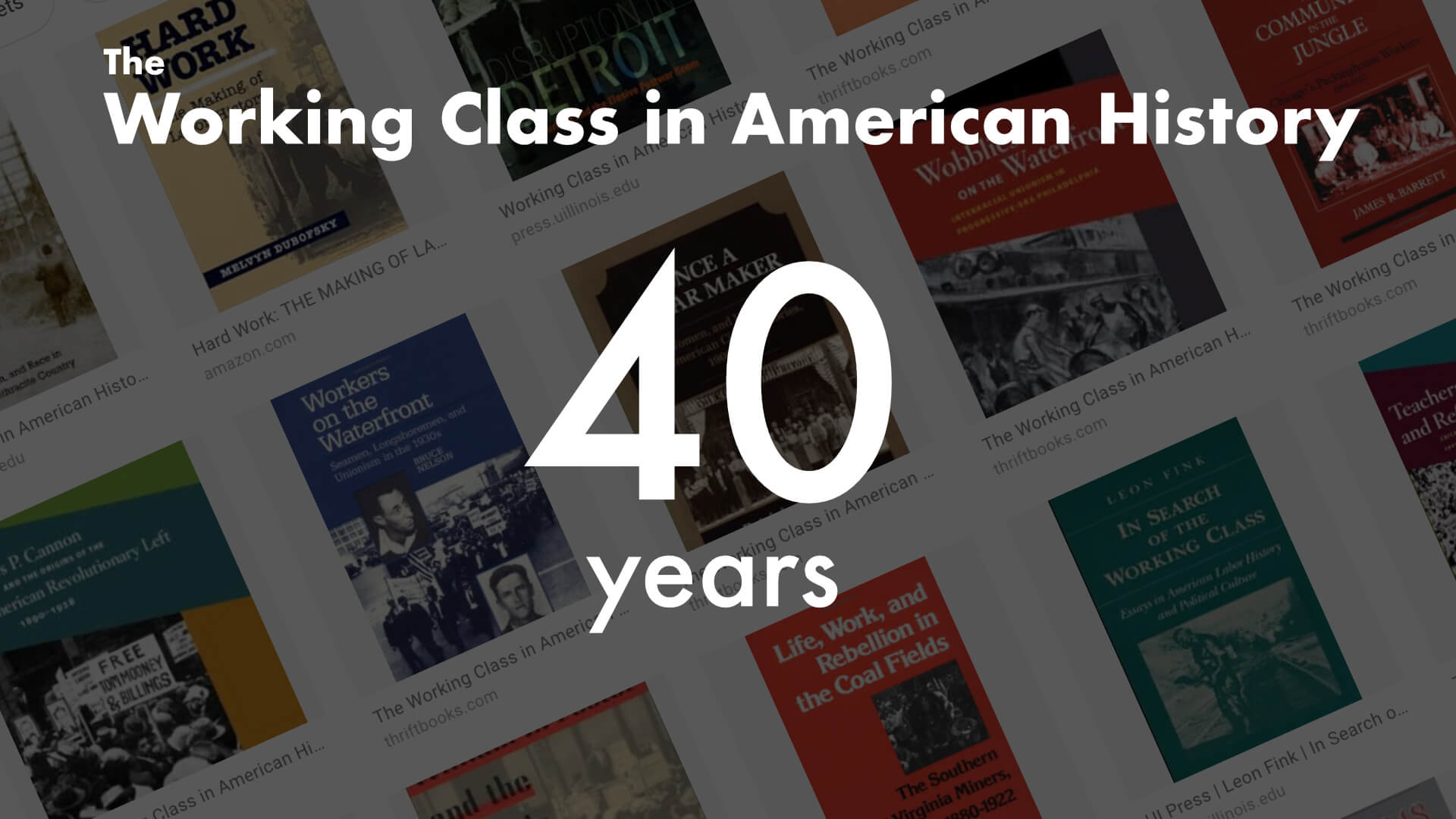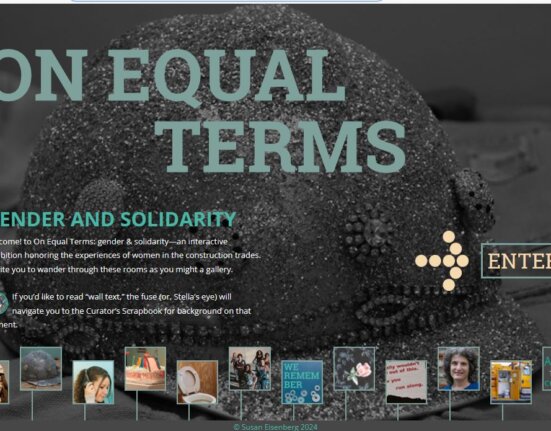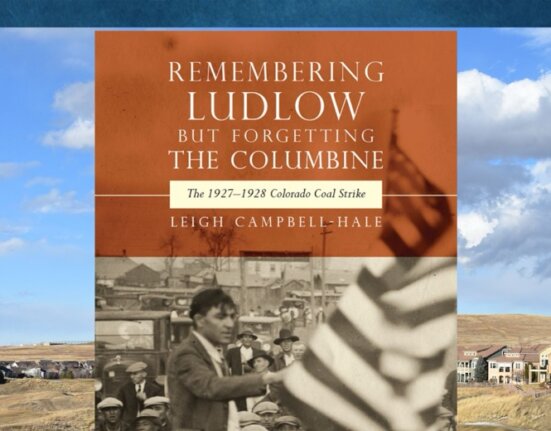Editor’s note: This is our 5th in the series on the celebration and reflections on the anniversary of the University of Illinois Press Working Class in American History. Jessica Wilkerson has just published her first book in this series, and was asked to comment on her personal encounter with the series and labor history.
I’m not sure I entered the field of labor history as much as I followed signs.
During my junior year at an East Tennessee college, I read Jacquelyn Hall’s “Disorderly Women,” about women’s labor activism in the textile industry in Elizabethton, Tennessee, in 1929. That article brought together labor, women, and sexuality, and it included characters like the female rabble-rousers Texas Bill and Trixie Perry. I wanted to read that kind of history.
A few years later, during my first year of graduate school at Sarah Lawrence, I took a labor history seminar with Priscilla Murolo, whose first book, The Common Ground of Womanhood, is in the Working Class in America Series. She was the mentor I needed at that moment.
She helped me get an internship at the Tamiment Library and Robert F. Wagner Labor Archives at NYU. There I processed and organized papers of various female labor activists, including Connie Kopelov, who was educational director for the Amalgamated Clothing and Textile Workers Union and who helped to found the Coalition of Labor Union Women. I loved that work of sifting through pamphlets, flyers, and conference programs that showed a side of the women’s movement—made up of working-class and union women—of which I had been previously unaware.
On one of my trips home, I told my grandmother about Connie Kopelov, the fascinating labor organizer who worked with the Coalition of Labor Union Women. Her face went pale. She asked me to wait a minute, that she needed to find something. She went back to her bedroom and pulled out the brown, leather wallet that had belonged to my grandfather. He had died when I was six, and I didn’t know much about his life. She had kept his wallet just as it had been when he died, tucked away in his drawer in the dresser they had shared. Inside the wallet was his membership card for the Coalition of Labor Union Women, showing that he was an ally of working women.
I learned that my grandfather had been a union organizer for the Amalgamated Clothing and Textile Workers Union. He had been hired by the Amalgamated after helping to organize the garment factory where he worked as a pants presser in Knoxville, in the early 1950s. He continued that work until just a few years before he died in 1986.
The story of his life ran counter to everything I had ever learned about where I grew up in conservative East Tennessee, as had the stories of the striking girls in Elizabethton. I soon decided I wanted to study and write about the labor and working-class histories of the South and Appalachia.
My research eventually led me to poor and working-class people’s movement in Appalachia.
I grew up about forty miles from the Highlander Research and Education Center, where many labor and civil rights organizers were trained in the twentieth century, and where a new generation of activists learn to build movements in support of immigrants and LGBTQ youth. I had never heard of Highlander until I went to college about ten miles from its headquarters in the foothills of the Smoky Mountains. I would end up spending many years asking questions about the people from Appalachia who had traveled there to network with organizers from around the South.
When I began my project, I believed I would write a more traditional labor history, one about unions and strikes in the 1970s. I had already found inspiration in the documentary film Harlan County, USA. My study would ask what happened to the women who picketed alongside striking coalminers, as well as the Appalachian labor movement, in the decades after. Part of that story made it into my book, but I realized I could not fully understand it, in particular how gender operated within it, without a deep dive into the history of federal, antipoverty programs in the region, which profoundly shaped the lives of working people.
I realized that the federal War on Poverty was crucial for understanding much of the labor activism of the 1970s, especially women’s participation in it. Women’s organizing during the War on Poverty also made me think harder about unpaid labor that women performed. For instance, I traced a welfare rights movement in Appalachia that has been almost completely ignored in Appalachian history and in histories of the welfare rights movement. My book ended up being one of intersections: I think about how working-class women interacted with the federal War on Poverty; how welfare rights activists conceived of labor; how the labor and feminist movements intersected in Appalachia.
The Working Class in American History series shaped the history that I wrote.
I stacked the monographs about women’s labor histories, published in the UIP series, on the corner of my desk. Susan Porter Bensons, Counter Cultures, Ruth Milkman’s Gender at Work, and Dorothy Sue Cobble’s Dishing it Out, among others, helped me think about how work was gendered, as well as the relationship between feminism and working-class movements. The Working Class in America series has also regularly published the best scholarship on Appalachian labor history. Joe William Trotter’s Coal, Class and Color, for example, showed how coal mining transformed African American life, labor, and communities in West Virginia, and his influences are easy to see in my own book.
But I also like to see my book as bringing new questions to bear in the Working Class in American History series. The major themes of my book—social reproduction, caregiving labor, welfare rights, Appalachian women’s activism—imagine a broad working class in Appalachia, contrary to the myth of coal miners as the only real workers in the mountains, and the most authentic of the American working class.
Instead, my book links the various kinds of caring labor that women did in their communities, from sitting at bedsides to exposing environmental destruction to creating local health care networks and fighting for welfare, workers’ and women’s rights. It thus constructs a new narrative of Appalachia—and subsequently the working class in America—through the lens of women’s labor and activism.







